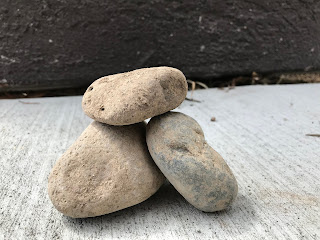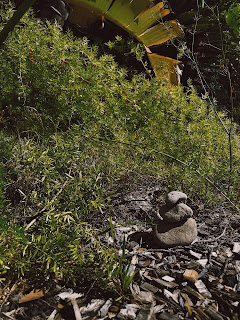Well, it’s that time of year again—the festive lights shine
bright, the holiday music pumps out over every available sound system, and a
familiar early-December refrain greets my ears on at least a twice-daily basis.
“I really need to pass this class.”
With final exams and the end of the semester bearing down on
them, many of my students are now in full-on panic mode. The Reckoning is here,
and all the missed classes, botched quizzes, and
didn’t-bother-to-do-the-readings are knocking at their doors.
In all honesty, I never gave much thought to my students’ “I
really need to pass” before; I would typically dismiss it with a shrug or an
offer to go over their grade with them. But I’ve been thinking about it more
and more lately, and I have a new response that I can’t wait to try out.
“Why tell me?”
There’s a big assumption underlying their statement that I
can’t ignore. When they tell me that they need to pass my class, what they’re
really doing is transferring the responsibility of their grade—of their education—over
to me. They’re saying, You alone can pass me…please do so. But I’m not
Santa Claus with a bagful of passing grades, and what they need to realize is
that I’m not the one they should be talking to. Instead, early in the semester
and then over and over again throughout it, they need to repeat “I need to
pass” to themselves.
And then act accordingly.
What does “act accordingly” mean? Here are a few
observations that may offer a clue: it’s never the students who show up every day
who say “I need to pass.” It’s never the ones who bother to read the material,
or who engage in class discussion, or who come to my office hours to go over
assignments, or who manage to stay awake and off their phones during class.
It’s the ones who mistakenly believe that the “opportunity” to earn a degree is
the same as the “right” to have one, the ones who think that simply having a
seat in the classroom is enough.
The fact of the matter is that the stakes (not to mention
the costs) of education are at an all-time high, and the margin for
error is slimmer than ever. Assuming a student can even complete a degree—much
more the exception than the rule for the underprepared multitudes emerging from
high school today—there’s still a job to find after graduation, and if you’re
saddled with debt, then that job had better be a pretty good one. But those
jobs are in short supply, and if you’re competing with huge numbers of
applicants, you’d better set yourself apart from the crowd with some important
basics, like having a strong work ethic and being the person who cares most
about your education.
So to any students reading this who have ever told (or
continue to tell) your professors that you “need to pass,” here’s a suggestion
for a New Year’s resolution: make sure you tell it to the right person.
























































































